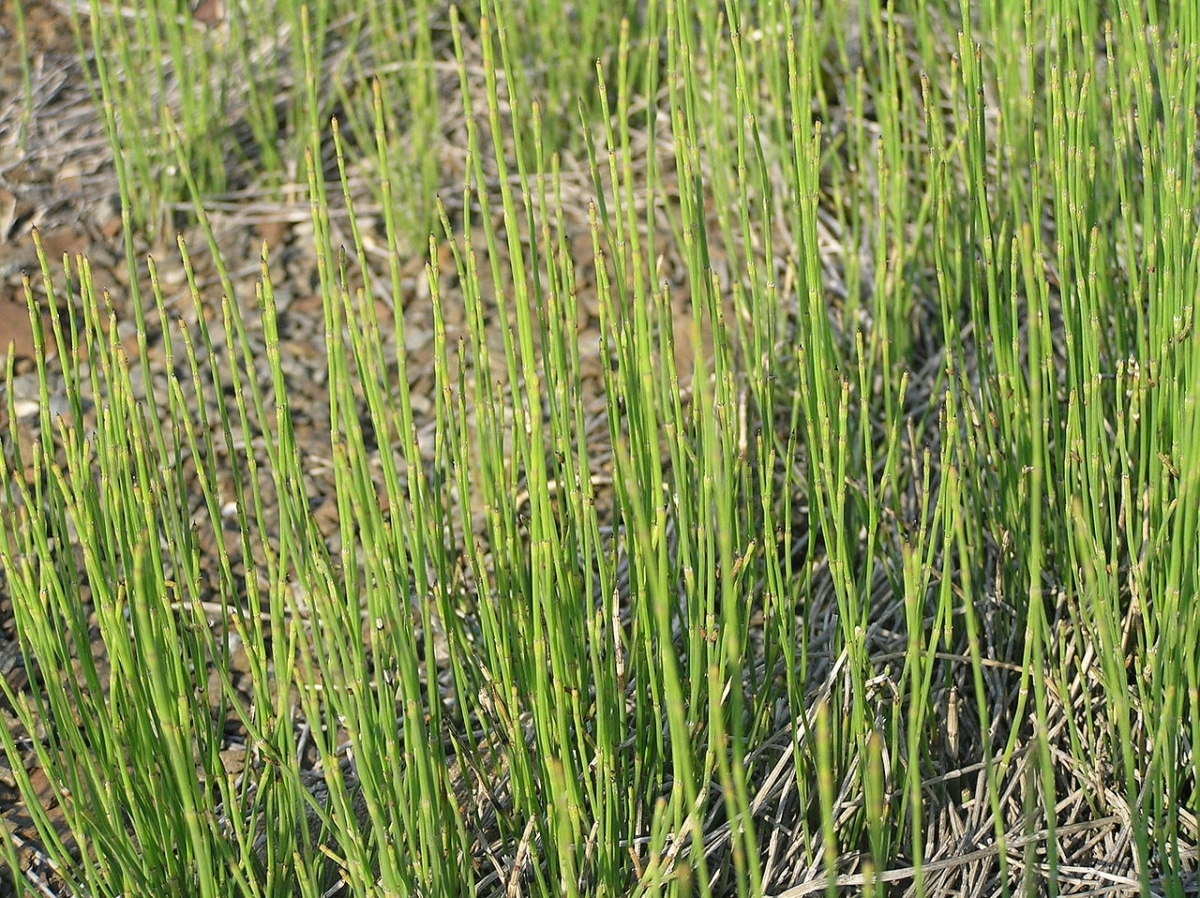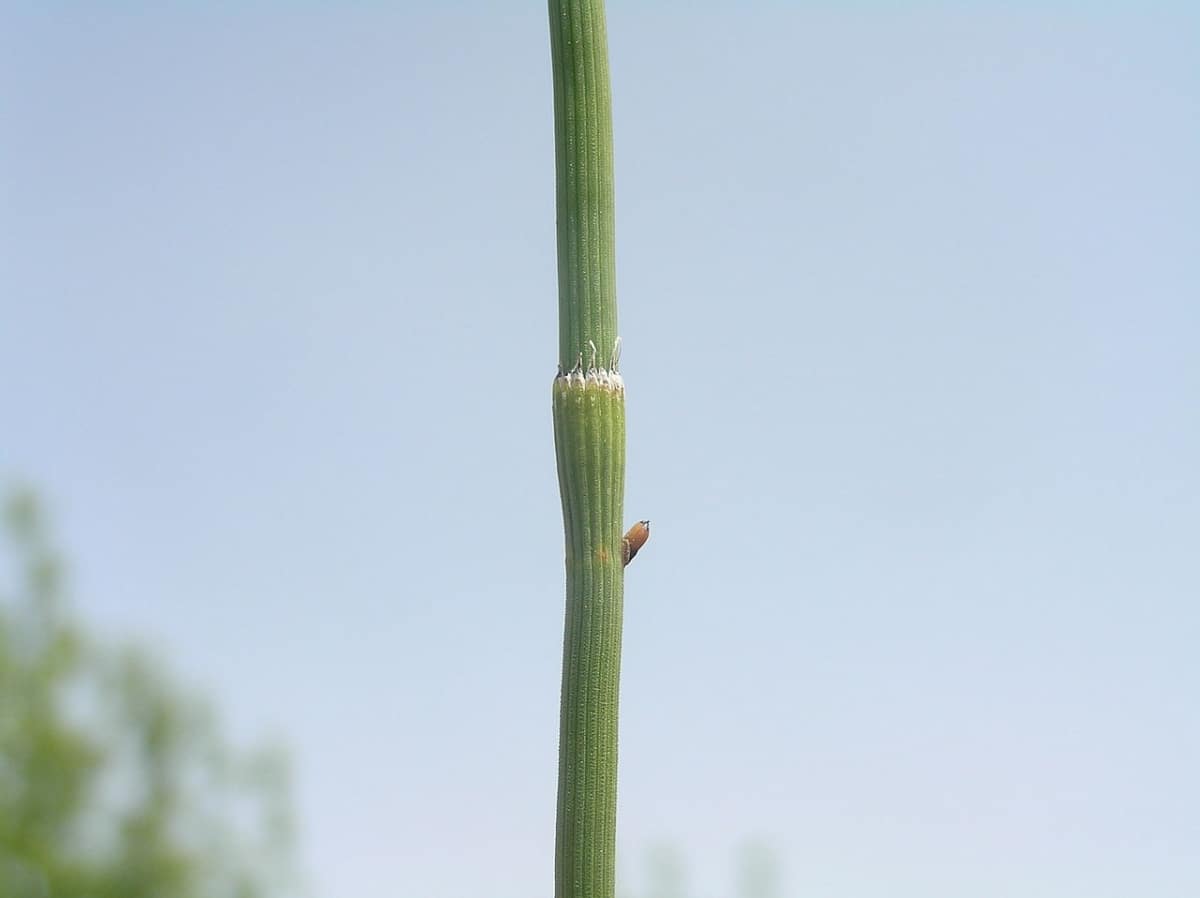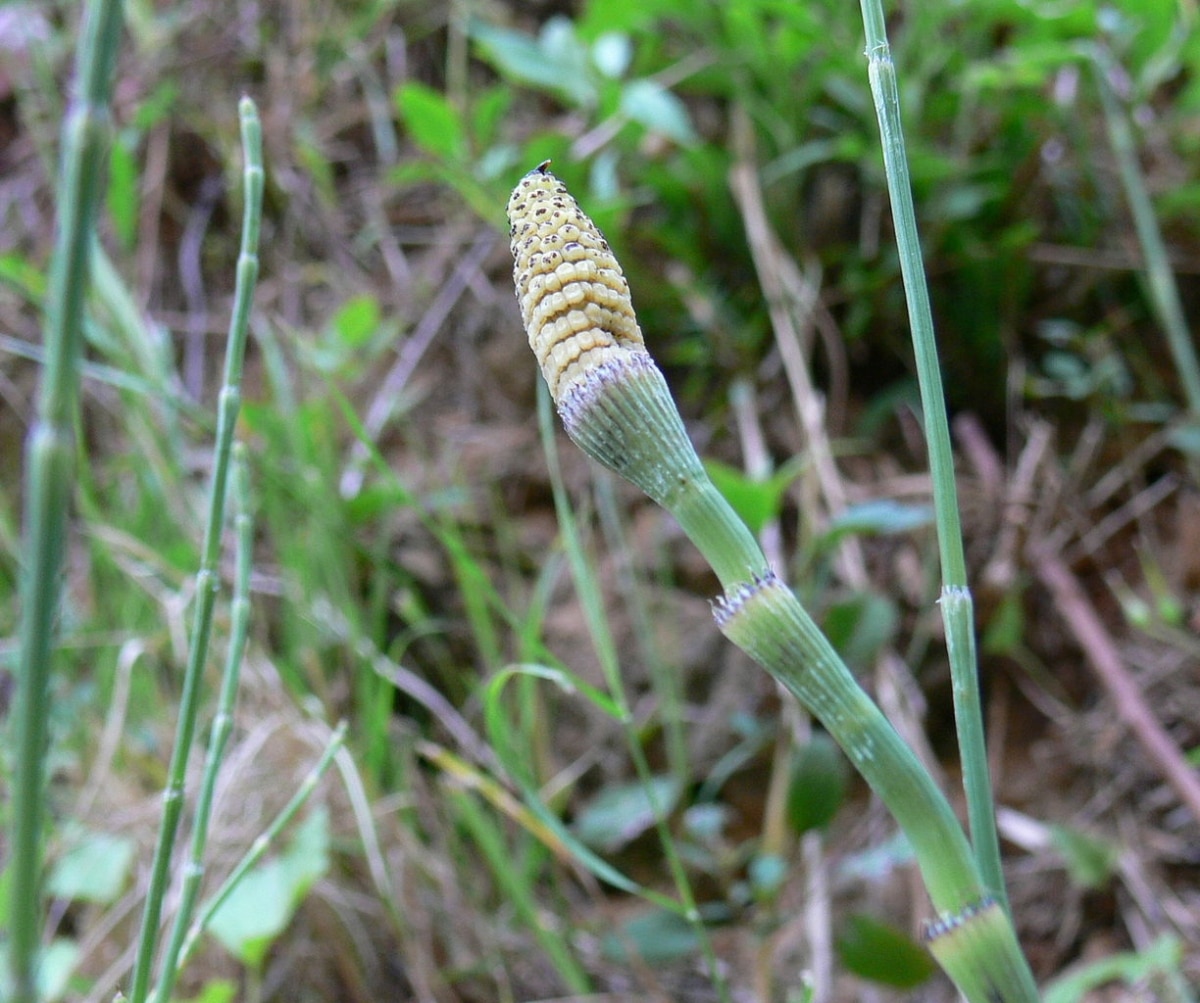
Image - Wikimedia / Petr Filippov
El Equisetum ramosissimum it is a very interesting plant for those who have a pond. Its thin and green stems can provide shelter for the fish that live in it, keeping them protected from possible predators such as some birds, or even from domestic animals such as dogs and / or cats that share their life with us. And even if you don't have a pond, nothing happens: it adapts perfectly to pots.
Like the rest of the species of the genus, grows pretty fast. But it tolerates pruning well, so if you see that it is spreading too much, you will always be in time to divide it and plant it in other containers for example.
Origin and characteristics of Equisetum ramosissimum

Image - Wikimedia / Stefan.lefnaer
It is a plant known as horsetail, which belongs to the genus Equisetum. Its scientific name, Equisetum ramosissimum, is considered synonymous with Equisetum giganteum, but don't be surprised by the surname: only grows up to 1 meter tall. Its stems are thin, have between 8 and 20 ribs and a diameter of up to one centimeter.
Lacks leaves, so the function of photosynthesis has fallen on the stems themselves. For this reason, they are green, as they contain chlorophyll. Chlorophyll is the green color pigment, and it is essential for any plant to be able to produce its own food after having absorbed energy from the sun and carbon dioxide from the atmosphere.
It also has no flowers, as a good plant gymnosperm What is it. In return, it presents mucronate strobili that arise in the upper part of some stems.
El Equisetum ramosissimum It grows in much of the world, although it is found more in Europe (including Spain) and in America. Its habitat is humid regions with almost always sandy soils, but it also adapts to dry ones.
How do you take care of yourself?
If you want to know everything about the care that must be given to this variety of Equisetum, now you will be able to find out what it needs to be able to grow without missing anything:
Location
El Equisetum ramosissimum is a plant that needs to be exposed to sunlight directly. It adapts to semi-shade, but it is preferable to have the sun all day so that its stems develop normally; that is, more or less straight and green.
When it lacks light we will see that it bends when it loses strength, and that the color is lost, turning whiter. For this reason, we advise avoiding having it indoors.
Earth

Image - Wikimedia / Petr Filippov
Where are you going to grow it: in a pot or in the ground? Depending on it, the land will be somewhat different. For instance:
- Flower pot: universal substrate must be used (for sale here), or if you prefer mulch mixed with quartz sand or pumice. It is important that it be able to retain moisture for a time, since the plant does not resist too much drought.
- Garden: prefer sandy soils, since they drain water quickly and, therefore, allow their roots to receive the oxygen they need. If it is very compact, before planting the Equisetum ramosissimum Mix it with quartz sand, pearlite or the like.
Irrigation
As we talk about a semi-aquatic plant, the watering frequency will be high. This means that if we have it in a pot, we can put a plate under it and fill it with water every time we see it empty; and if it is in the ground, we will water it every day or every other day in the dry season, or whenever the land is dry or about to dry out.
It is advisable to water at sunset since in this way the water is used much better. And incidentally, you can also moisten the plant a little if at that time it is not in direct sunlight. With this, the environmental humidity is higher, something that will be good for the Equisetum, since this way its growth will be a little faster.
Subscriber
It is advisable to pay at Equisetum ramosissimum during the spring and summer months. But yes, keep in mind that the climate is not an exact science: if in your area in February the temperatures begin to be high (15ºC or more) and the frosts no longer occur, you can start to pay your plant for those dates.
Use fertilizers of organic origin, such as manure, guano (for sale here), mulch, or egg and / or banana peels. In this way, it will grow wonderfully.
Pruning and multiplication
Tolerates pruning well, provided it is done in late winter or early spring. So that it does not spread too much, it is advisable to divide the plant with the help of a previously disinfected serrated knife or hand saw. These chunks can then be compost or planted elsewhere in the garden or in other pots.
Rusticity
It is a plant that resists frost of up to -4 ° C.

Image - Wikimedia / Jod-let
Do you dare to cultivate it?